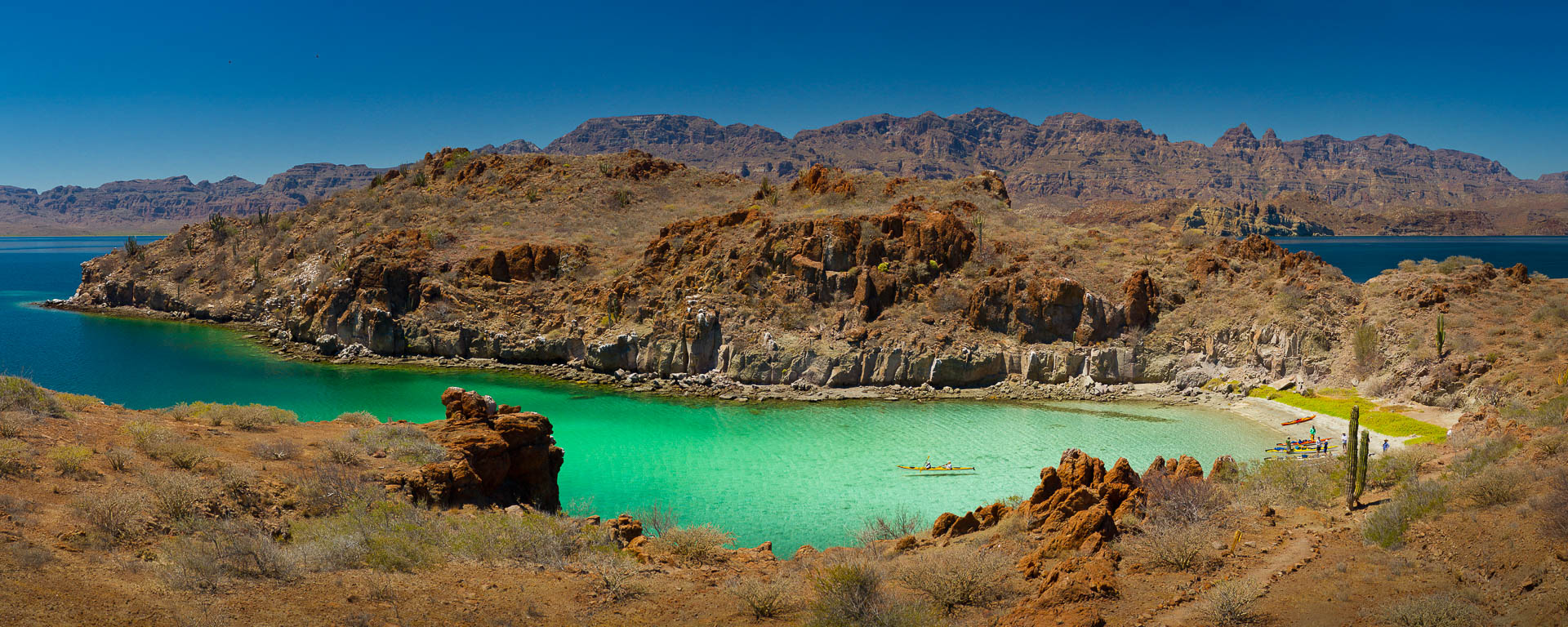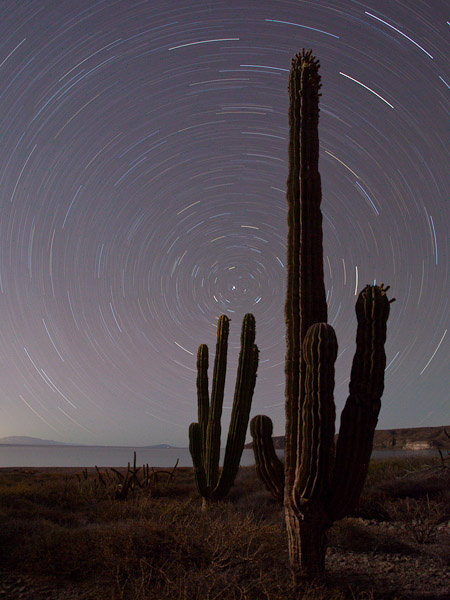
“Old wisdom says, ‘Find out what you did wrong and never do it again.‘ New wisdom says, ‘Find out what you did right, so you can be sure to do it again.‘ The old way suggests moving ahead while looking back over your shoulder. The new way suggests moving forward by finding safe footholds and continuing to climb.” Bernard Haldane
Expedition Trip Critique – Isla Carmen, Baja, MX.
I had a bit of anxiety the first few days of my April, 2011, Isla Carmen circumnavigation. I felt I wasn’t getting the shot. My early kayaker-on-the-water images were boring (or so I thought). The first sunset and sunrise were duds. I needn’t have worried. I worked hard, especially the magic hours (the time just before and after sunrise and sunset). The long trip smoothed out the bumps, and gave me chances to redeem some failures. Overall, I’m pleased with the shoot.
First, a gear critique:
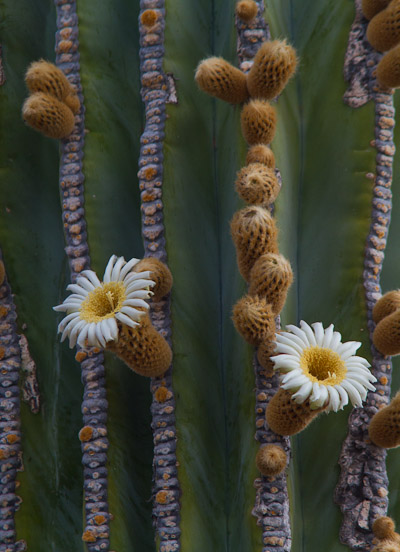
In my March gear prep tip, I exhorted “don’t take stuff you won’t use”. Carmen was a 9-day expedition trip without power or panga support, and with limited stowage in the compartments of sea kayaks. The outfitter, Sea Kayak Adventures, has a well-thought-out and exacting gear check list, with little room for deviation. Toting extra gear is heavy baggage; less is more. My decision to put all my extra photo gear in a small Pelican 1200 mini S-case instead of something larger was a good one. That said, I wish I had taken another 8 GB of Compact Flash. I ran out the last day, and actually deleted some files in order to keep shooting. Fortunately, I had plenty of batteries (five Canon-equivalent LP-E6). For the trip I used the energy equivalent of 3.3 batteries. So what didn’t I use? I didn’t use my ND filter, 25mm extension tube, and 430EX flash—but I’d still take them. Each is a lifesaver when you need them. My Ewa-Marine housing (U-BXP100) worked perfectly, getting me some snorkeling shots without a lot of effort, and without too much risk to the gear (Canon 5D II w/17-40mm f/4L). One key was adding weight inside the housing. I put a four-pound lead weight underneath the camera base, and after closing it up squeezed out some of the air. The lead gave it a moderate negative buoyancy that helped me do surface dives, and kept me on the bottom shooting if I wanted to stay there. I suppose I’m pretty much a fish in water, but these underwater photos were an easy capture.
My panorama tool worked flawlessly as well. At dawn and dusk I needed to quickly set up and shoot in changing light. I nailed a few sunrise and sunset panoramas as Baja once again provided fantastic skies. My remote shutter release, the Canon TC-80N3, was a great aid for keeping the images in register and speeding up the shots when I used auto-exposure bracketing.
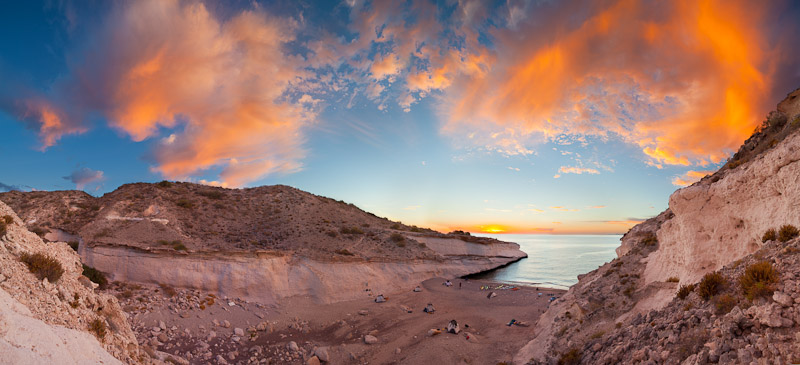
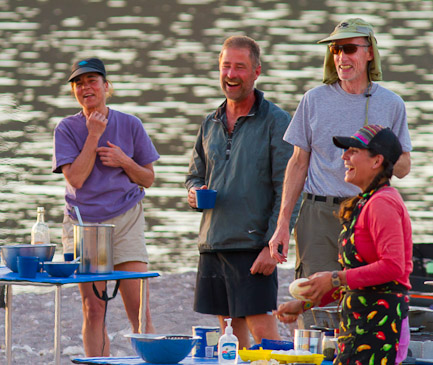
Second, the shot list critique:
I did less well on my shot list—I missed quite a lot—but I did score a few serendipitous photos. One goal was to show the prickly, pokey desert with close-ups of cactus spines and armored critters. I got very little of that. A simple example, I wanted to get a hermit crab with OOF kayaks on the beach, but when I finally got a hermit crab in daylight, I plumb forgot to get the shot (Maybe I should have laminated the shot list and stuck it under bungie on the kayak deck). Then there was the divorce boat shot. Kate and I were going to set up a scene with us strangling each other over (or in) a double kayak. As with many such shots, I thought it would be something I could sell, or at least get a laugh with. We never tried.
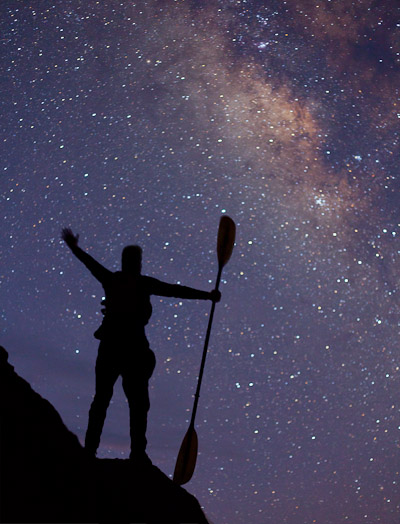
A big failure was my Milky Way night sky images. I made three attempts, and I blew the focus on all of them. In retrospect, I should have pre-marked my 50mm f/1.8 lens/focus ring at its infinity setting. The only Milky Way image that succeeded was when I focused on a foreground rock (and kayaker holding a paddle). The paddler is sharp, the stars are OOF a bit but it’s acceptable because the silhouette is in focus. I also didn’t photograph any hands—there were several on the shot list. Hands are expressive, and could generate saleable material: for instance, hands (fingers) pointing, hands on paddle, hands popping spray skirt, man and woman holding hands at sunset. I got nada. Lastly, I stumbled on product placement photos—putting gear into shots that I can later sell to the manufacturers. Oh, well.
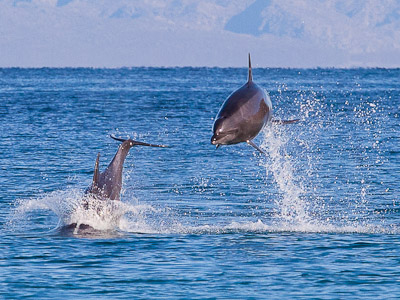
Two of my favorite serendipity shots are the leaping Common Dolphin and the Honeymoon Cove panorama. For the dolphin, we were on shore at Punta Arena, and I raced like Usain Bolt to get my camera as dolphin approached the point. My 70-200mm f/4L was on the Canon 5D II, so that’s what I grabbed. The lens gave me a wide field-of-view to see the dolphins leap so I could re-frame and shoot. I probably would have got the shot with the 7D/70-200mm, but I’m not sure I would have got it with the 300mm or the 300mm w/1.4x with either body. I needed to be looking through the lens to get on the dolphins, and a narrow field-of-view may have missed it. The image here is considerably cropped, but it will serve a purpose for client Sea Kayak Adventures and other web use.
At Honeymoon cove, I wasn’t thinking panorama, I had limited time, it was harsh, mid-day light and my tripod was stashed away in the kayak. The pano was quickly thought out and shot from the top of a rock outcrop: six vertical, handheld images shot at 35mm, ISO 200, f/5.6, 1/500sec, with the Canon 7D. The images were merged in Photoshop into a seamless, 13,603×5033 image. Printed at 300 dpi, that’s a 45-inch-wide panorama. It will make a gorgeous, high-detail, large print.

A third serendipitous shot came when I heard the campers roar in laughter when I was a long way off but toting a telephoto lens. Hardly thinking, I lifted the glass and captured the moment.
A couple of planned shots I got right—improving on previous trip photos—were a star-trails shot with a Cardon foreground, and one of several images of Cardon flowers (see the first two images, above). I looked hard and often for these subjects, and it paid off. Paraphrasing Haldane, I’d like to think I climbed high for those two shots in particular.
Gary
